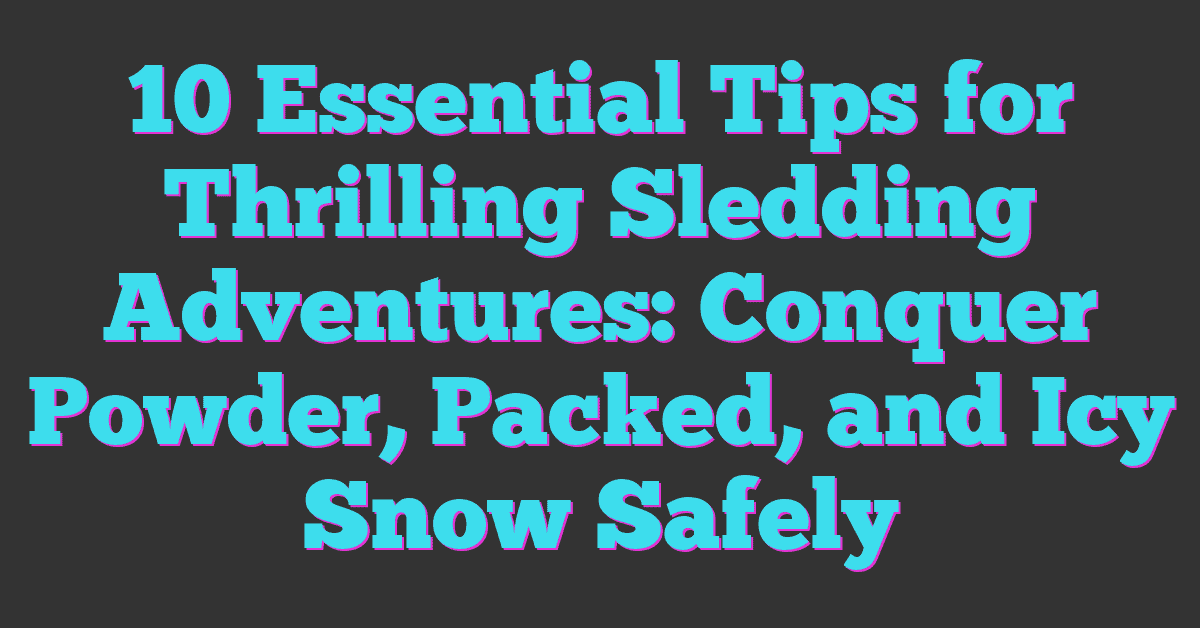Carrying safety gear can feel like a hassle, especially when you’re juggling multiple items or trying to stay organized on the go. I’ve been there—struggling with bulky equipment or realizing I forgot something important right when I needed it most. But trust me, it doesn’t have to be that way.

With a little planning and the right approach, you can make carrying safety gear simple and stress-free. Whether you’re heading out for work, an outdoor adventure, or just want to be prepared for emergencies, knowing how to pack and organize your essentials can save you time and energy. Let’s dive into some practical tips to keep your gear accessible and manageable without overcomplicating things.
Why Carrying Safety Gear Efficiently Matters
Carrying safety gear efficiently keeps me prepared in unpredictable environments. In snow sports, conditions can shift quickly; having what I need within reach reduces risks and boosts confidence. Whether I’m navigating steep backcountry trails or enjoying groomed slopes, proper organization ensures I can focus on the experience instead of fumbling through my pack.
Efficient storage also prevents damage to vital equipment. Items like avalanche beacons, first aid kits, and multi-tools are essential but can get crushed or tangled if not packed thoughtfully. By keeping gear organized in dedicated compartments or durable cases, I protect it from wear and tear, extending its usability trip after trip.
Quick access to safety tools saves time during emergencies. If someone’s caught in an avalanche or injured on the slopes, every second counts. Knowing exactly where my gear is helps me respond effectively, whether digging out a buried skier or addressing a broken bone.
Lastly, carrying gear efficiently makes it easier to enjoy the day without unnecessary strain. Heavy, disorganized packs cause discomfort and throw off balance, which is critical in snow sports. By distributing weight evenly and minimizing bulk, I move comfortably and stay focused on my activity.
Factors to Consider When Carrying Safety Gear
As a snow sports enthusiast, I know how critical it is to carry safety gear efficiently. Whether carving through powder or scaling icy peaks, well-organized gear keeps me safe and focused on enjoying the ride.
Type of Safety Gear
The gear I pack depends on the terrain and risk level. For backcountry skiing, I carry an avalanche transceiver, probe, and snow shovel. In snowboard parks, a helmet and impact shorts top the list. Each item serves a unique purpose, so I organize them by priority. For example, I keep the avalanche transceiver close to my chest and the probe in an easy-to-access pocket of my pack.
Duration and Purpose of Activity
Short trips to the resort require fewer items, like a helmet and wrist guards, while day-long backcountry expeditions demand more. For multi-hour adventures, I pack additional layers, a first aid kit, and a hydration system. My objective also informs my packing—climbing icy slopes for snowboarding demands crampons and ice axes, while a casual resort day doesn’t.
Comfort and Accessibility
Balancing safety and comfort is key to an enjoyable day on the mountain. I use a lightweight, ergonomically designed pack that hugs my back and distributes weight evenly. I place frequently needed items, like gloves or goggles, in front-facing compartments, reducing the need to stop frequently. Quick accessibility matters most during emergencies, so I practice reaching critical gear like my transceiver and probe to avoid delays.
Best Methods to Carry Safety Gear Efficiently
Carrying safety gear efficiently in snow sports makes every adventure smoother and safer. Over the years, I’ve found that the right systems and techniques not only keep gear organized but also enhance mobility on varied terrains.
Backpacks and Utility Bags
Backpacks with specialized compartments are essential for snow sports. I always use a low-profile, lightweight pack to avoid movement restrictions during descents. Models featuring dedicated pockets for avalanche tools, hydration reservoirs, and separate compartments for wet gear help maintain balance and keep everything dry. For shorter trips, a 15-25L pack suffices, while multi-day outings demand larger capacities, like 30-40L. I’ve also found chest-mounted mini utility bags handy for securing maps, first-aid kits, or snacks within arm’s reach.
Wearable Safety Equipment
Integrated safety gear reduces bulk and maximizes efficiency. I never hit the slopes without wearing a helmet equipped with a built-in goggle strap and a RECCO reflector for added safety. A harness with tool loops for carrying items like carabiners and small radios has proven helpful during backcountry skiing. Wrist-mounted GPS devices and compact radios further enhance accessibility without overloading my pack.
Modular Carrying Systems
Using modular systems simplifies packing by customizing load distribution. My modular pack includes detachable compartments, letting me adjust the configuration for each trip. For example, a removable avalanche tool pouch helps me travel lighter on groomed trails. Some systems offer MOLLE webbing to attach versatile pouches for radios or cameras, which I find perfect for quick reconfigurations based on the day’s needs. Efficient modular setups save time and keep my essential safety equipment secure.
Tips for Organizing Your Safety Gear
Keeping safety gear organized makes any snow adventure smoother and safer. I’ve learned that with proper organization, I can focus on enjoying the slopes instead of fumbling for equipment when I need it most.
Prioritize Essential Items
I always start by identifying the must-have items for the trip. My top priorities for snow sports include an avalanche transceiver, shovel, probe, and helmet. In areas with unpredictable weather, I add extra items like a survival blanket or GPS device. Packing these essentials first guarantees they’re always ready and accessible. Non-critical items like snacks or extra gear stay in secondary compartments.
Use Compartments and Pouches
A quality backpack, with well-designed compartments, helps me stay organized. I prefer packs with separate sections for my avalanche kit, hydration system, and layers. Small zippered pouches keep smaller essentials, like multitools or sunscreen, from getting buried. Dedicated gear loops or exterior straps make carrying bulkier items, like crampons or skis, secure and hassle-free.
Perform Routine Gear Checks
Before heading out, I inspect every piece of safety gear. I double-check my transceiver for battery life and ensure my shovel and probe are in top condition. Worn straps or damaged gear get replaced immediately. Regular maintenance minimizes surprises on the trail, so I know I can rely on my equipment in any situation.
Common Mistakes to Avoid
Efficiently carrying safety gear isn’t just about having the right equipment—it’s also about avoiding common errors that can create unnecessary risks. Here are frequent mistakes I’ve encountered during snow sports trips and how to sidestep them.
Overloading Your Gear
Packing too much can compromise balance and agility on difficult terrain. I’ve seen people lug oversized backpacks containing items they never end up using, which tires them out and slows them down. Stick to essential items like avalanche transceivers, shovels, probes, helmets, and a compact first aid kit. Evaluate the duration and terrain of your trip to determine the bare necessities instead of carrying non-critical extras.
Ignoring Accessibility
Poor gear organization leads to delays during emergencies. I learned this lesson the hard way early in my snow-sporting adventures when digging through my pack for a probe wasted valuable seconds. Essential items should be in dedicated, easily reachable compartments. For example, store avalanche tools in designated pockets and secure small but vital items like whistles or multitools in a reachable chest or hip strap.
Choosing the Wrong Carrying Solution
Improper equipment leads to discomfort and inefficiency. Once, I used a bulky, unfit pack that shifted constantly, throwing me off balance. Select ergonomically designed backpacks with specialized storage for snow sports gear. Harnesses with tool loops and lightweight options with streamlined designs ensure a snug fit while keeping items secure on challenging slopes. Prioritizing the correct carrying solution makes all the difference in convenience and safety.
Conclusion
Carrying safety gear efficiently doesn’t have to be overwhelming. With the right tools, a little planning, and a focus on organization, you can make your adventures safer and more enjoyable. Whether you’re tackling snowy slopes or preparing for any outdoor activity, having your gear accessible and well-organized makes all the difference.
By choosing the right carrying solutions and prioritizing essential items, you’ll feel more confident and prepared for whatever comes your way. Staying safe is always the priority, but it’s even better when you can do so comfortably and stress-free.
















